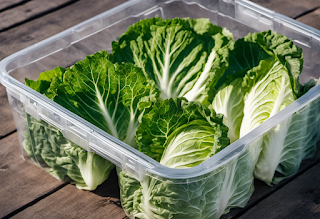- Selecting the Best Cabbage Leaves
- Preparing Cabbage Leaves for Preservation
- Using the Blanching Method
- Utilizing Brine Solution for Preservation
- Storing Cabbage Leaves Properly
Cabbage is a versatile vegetable that can be used in a variety of recipes, from salads and slaws to soups and stews. If you find yourself with an abundance of cabbage and want to make it last longer, preserving the cabbage leaves is a great solution. In this ultimate guide, we will discuss the best methods for preserving cabbage leaves to ensure their freshness and flavor for an extended period.
Selecting the Best Cabbage Leaves
When it comes to preserving cabbage leaves, selecting the right ones is crucial. Look for cabbage heads that are fresh, crisp, and free from any signs of damage or wilting. Choose leaves that are bright in color and have a firm texture. Avoid any cabbage leaves that are discolored, have insect damage, or feel mushy to the touch.
Preparing Cabbage Leaves for Preservation
Before you begin the preservation process, it is important to properly prepare the cabbage leaves. Start by removing any outer leaves that are damaged or wilted. Rinse the remaining leaves under cool running water to remove any dirt or debris. Pat them dry with a clean towel or paper towel.
Using the Blanching Method
Blanching is a popular method for preserving cabbage leaves as it helps to retain their color, texture, and nutrients. Here's how you can blanch cabbage leaves:
Bring a large pot of water to a boil. The pot should be filled with enough water to submerge the cabbage leaves.
Carefully place the cabbage leaves into the boiling water and let them cook for about 2 minutes.
After 2 minutes, remove the cabbage leaves from the boiling water using a slotted spoon or tongs.
Immediately transfer the blanched cabbage leaves into a large bowl filled with ice water. This will help stop the cooking process and preserve their bright green color.
Once the cabbage leaves have cooled in the ice water for a few minutes, remove them and pat them dry.
Blanched cabbage leaves can now be stored in airtight containers or freezer bags for future use.
Utilizing Brine Solution for Preservation
Another method to preserve cabbage leaves is by using a brine solution. The brine helps to maintain the crispiness and flavor of the leaves. Here's how you can use a brine solution:
Prepare a brine solution by dissolving 1 tablespoon of salt in 1 quart of water. You can adjust the amount of solution based on the quantity of cabbage leaves you have.
Place the cabbage leaves in a clean and sterilized glass jar, leaving some headspace at the top.
Pour the brine solution over the cabbage leaves in the jar, making sure they are fully submerged.
Secure the lid tightly on the jar and store it in a cool and dark place, such as a pantry or cellar.
Check the jar after a few days to ensure that the cabbage leaves are still submerged in the brine solution. If necessary, add more brine to cover the leaves completely.
Stored in brine, cabbage leaves can last for several weeks or even months.
Storing Cabbage Leaves Properly
After using either the blanching or brining method, it is important to store the cabbage leaves properly to maintain their quality. Here are a few guidelines for storing cabbage leaves:
If you have blanched cabbage leaves, place them in airtight containers or freezer bags and store them in the freezer. They can last for up to several months.
If you have brined cabbage leaves, keep the jar tightly sealed and store it in a cool, dark place. Remember to check the jar periodically and ensure that the leaves remain submerged in the brine solution.
If you want to store fresh cabbage leaves, keep them in the refrigerator. Wrap the leaves in a damp paper towel and store them in a resealable plastic bag or airtight container. They should stay fresh for up to 2 weeks.
By following these preservation methods and storage guidelines, you can enjoy the freshness and flavor of cabbage leaves for an extended period.
In conclusion, preserving cabbage leaves is an excellent way to make them last longer and reduce food waste. Whether you choose to blanch them or use a brine solution, the key is to properly prepare and store the leaves. By doing so, you can extend the shelf life of cabbage leaves and have them readily available for your favorite recipes.

Comments
Post a Comment